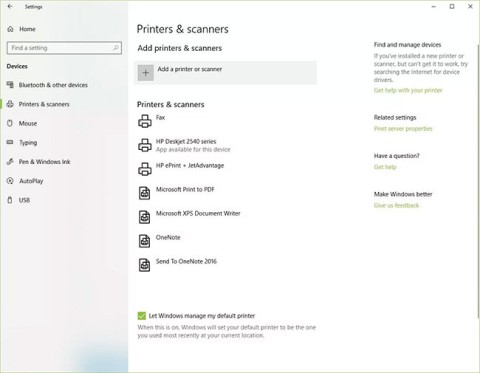The Best Diets for Heart Health

In addition to regular exercise and not smoking, diet is one of the best ways to protect your heart. Here are the best diets for heart health.
In the realm of life-saving technologies, few innovations hold as much promise as Automated External Defibrillators(AEDs). These compact yet powerful devices have revolutionized emergency medical care, offering an immediate response to sudden cardiac arrest(SCA) situations. Amidst the chaos of such emergencies, the most significant advantage of using an AED becomes evident: its ability to restore a normal heart rhythm promptly, drastically improving the chances of survival.
Sudden cardiac arrest is a dire situation where the heart’s electrical system malfunctions, causing it to quiver instead of pumping blood effectively. Every second that passes without intervention reduces the chances of survival. Herein lies the paramount advantage of AEDs– their ability to provide immediate and automated intervention. AEDs are designed to be user-friendly, allowing even bystanders with minimal medical training to administer life-saving care.
When it comes to cardiac emergencies, time truly is a precious commodity. Emergency medical services might not reach the scene in time to administer the critical first shock, which can make all the difference. AEDs bridge this gap by providing a means for mediating defibrillation before professional help arrives. Studies have shown that the survival rate drops by 7-10% for every minute that defibrillation is delayed. AEDs ensure that a potentially life-saving shock is delivered within moments, significantly improving survival and minimizing the risk of brain damage due to prolonged oxygen deprivation.
The widespread accessibility and user-friendliness of AEDs contribute further to their biggest advantage in emergencies. Public spaces, workplaces, schools, and transportation hubs increasingly deploy AEDs in easily identifiable locations, making them readily available for use by anyone present during a cardiac arrest incident. Additionally, these devices are designed with simple instructions and audio cues, ensuring that even individuals with no medical background can confidently and effectively operate them.
Selecting the best Automated External Defibrillator(AED), comprehending careful consideration of various factors to ensure you choose a device that suits your needs and the environment in which it will be used. Here’s a step-by-step guide to help you find the best AED in Canada:
Determine the context in which the AED will be used. Consider factors such as the location(public space, workplace, home, etc.), the expected number of people present, and the level of training available to potential users.
Familiarize yourself with local regulations and guidelines that pertain to AED use. Some regions might have specific requirements for AED placement, maintenance, and training.
Skim for AED models that are user-friendly and have clear visual and audio instructions. Devices with simple interfaces and voice prompts can greatly assist individuals with little to no medical training.
Consider the AED’s build quality and durability, especially if it will be placed in a high-traffic or outdoor area. Portability is also elemental for easy transportation during emergencies.
Opt for AEDs that conduct regular self-tests to ensure they are in working condition. Devices that perform automatic checks and provide visual or audio alerts for maintenance needs can save time and enhance reliability.
Check the electrode pad shelf life and replacement intervals. Some AEDs have pads that need to be replaced every two years, while others have longer lifespans. Consider the cost and ease of replacing these components.
AEDs run on batteries, so it’s elemental to choose a model with a battery life that suits your needs. Look for devices with long-lasting batteries and consider how easy it is to replace them.
Before acquiring an Automated External Defibrillator (AED), there exist several fundamental factors to ponder, ensuring the selection of the most suitable device for your specific requirements and circumstances. Here’s an all-encompassing list of considerations to bear in mind:
Ascertain the designated location for the AED and identify the individuals with access to it. Evaluate whether it will be in a public area, workplace, educational institution, residence, or another context. Distinct settings may entail particular prerequisites for AED positioning and utilization.
Familiarize yourself with local, regional, and national rules and guidelines for AED placement, training, maintenance, and use. Compliance with these regulations is crucial to ensure legal and safe operation.
Look for AED models with clear and simple user interfaces. Devices with visual and audio prompts can guide even untrained individuals through administering defibrillation.
Consider the required training level to operate the AED. Specific models are tailored for straightforward use by individuals with limited movement, while others might necessitate a more comprehensive understanding of medical protocols.
In addition to regular exercise and not smoking, diet is one of the best ways to protect your heart. Here are the best diets for heart health.
Diet is important to our health. Yet most of our meals are lacking in these six important nutrients.
At first glance, AirPods look just like any other true wireless earbuds. But that all changed when a few little-known features were discovered.
In this article, we will guide you how to regain access to your hard drive when it fails. Let's follow along!
Dental floss is a common tool for cleaning teeth, however, not everyone knows how to use it properly. Below are instructions on how to use dental floss to clean teeth effectively.
Building muscle takes time and the right training, but its something anyone can do. Heres how to build muscle, according to experts.
The third trimester is often the most difficult time to sleep during pregnancy. Here are some ways to treat insomnia in the third trimester.
There are many ways to lose weight without changing anything in your diet. Here are some scientifically proven automatic weight loss or calorie-burning methods that anyone can use.
Apple has introduced iOS 26 – a major update with a brand new frosted glass design, smarter experiences, and improvements to familiar apps.
Yoga can provide many health benefits, including better sleep. Because yoga can be relaxing and restorative, its a great way to beat insomnia after a busy day.
The flower of the other shore is a unique flower, carrying many unique meanings. So what is the flower of the other shore, is the flower of the other shore real, what is the meaning and legend of the flower of the other shore?
Craving for snacks but afraid of gaining weight? Dont worry, lets explore together many types of weight loss snacks that are high in fiber, low in calories without making you try to starve yourself.
Prioritizing a consistent sleep schedule and evening routine can help improve the quality of your sleep. Heres what you need to know to stop tossing and turning at night.
Adding a printer to Windows 10 is simple, although the process for wired devices will be different than for wireless devices.
You want to have a beautiful, shiny, healthy nail quickly. The simple tips for beautiful nails below will be useful for you.













